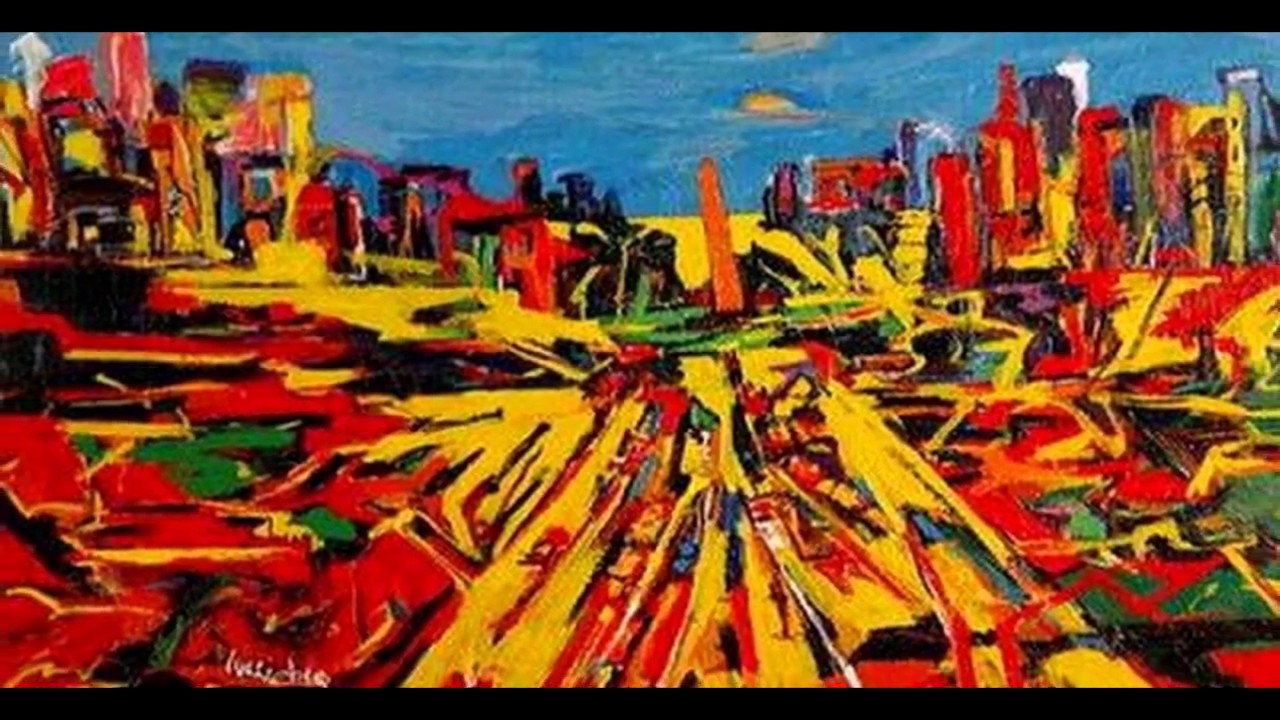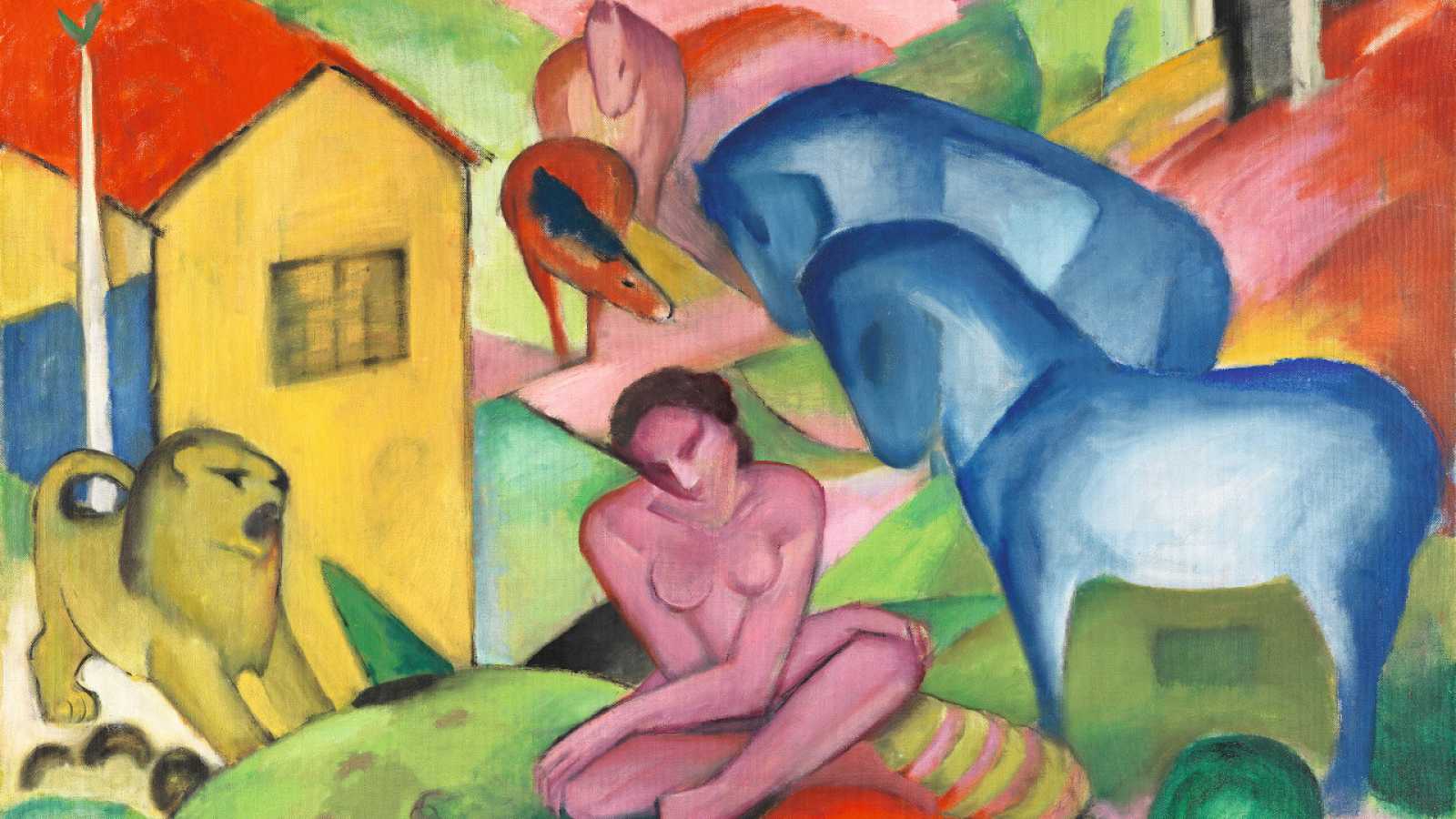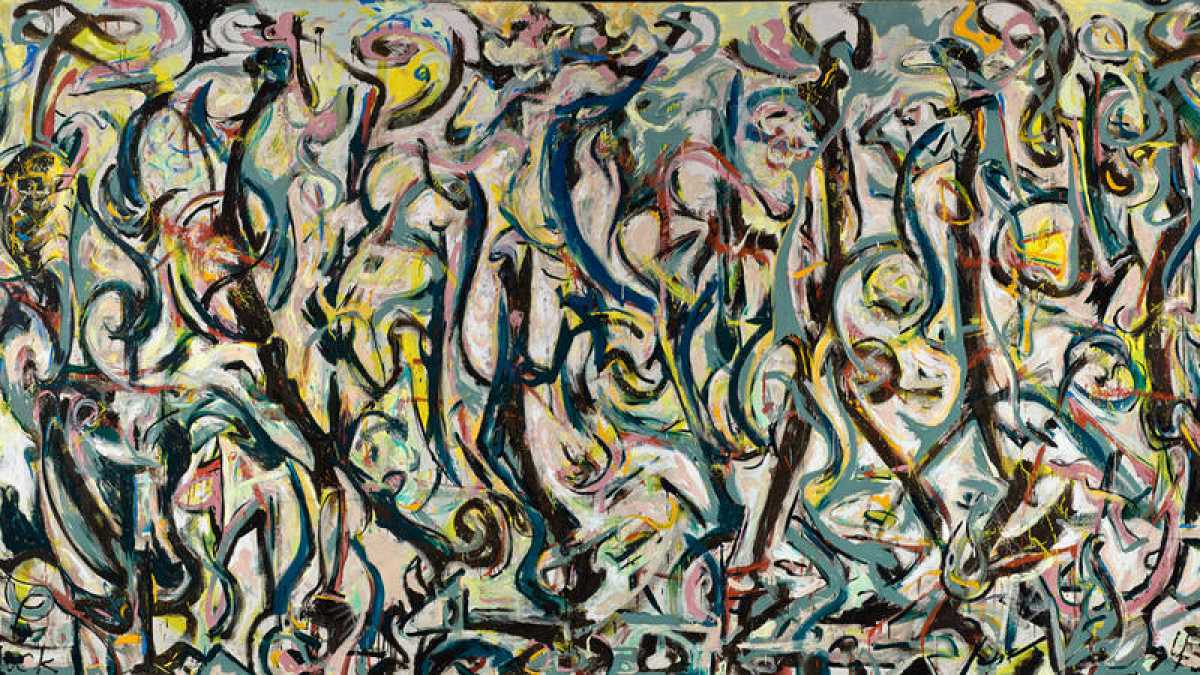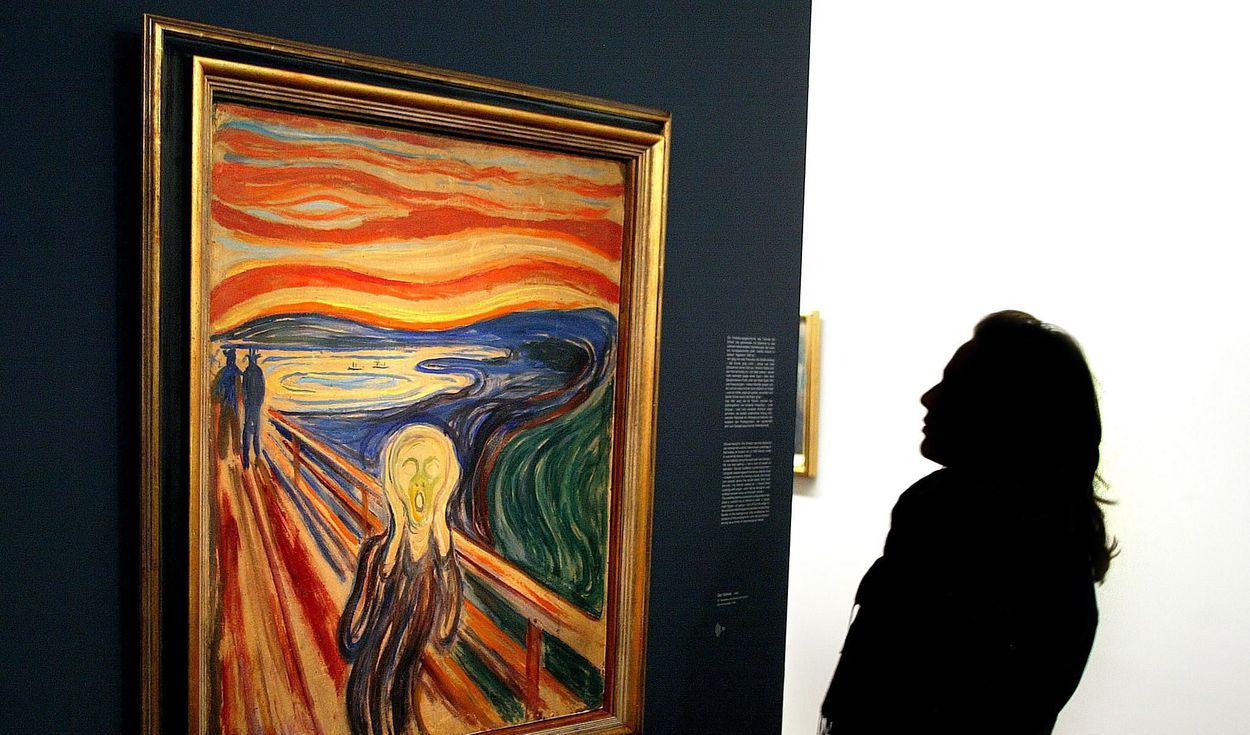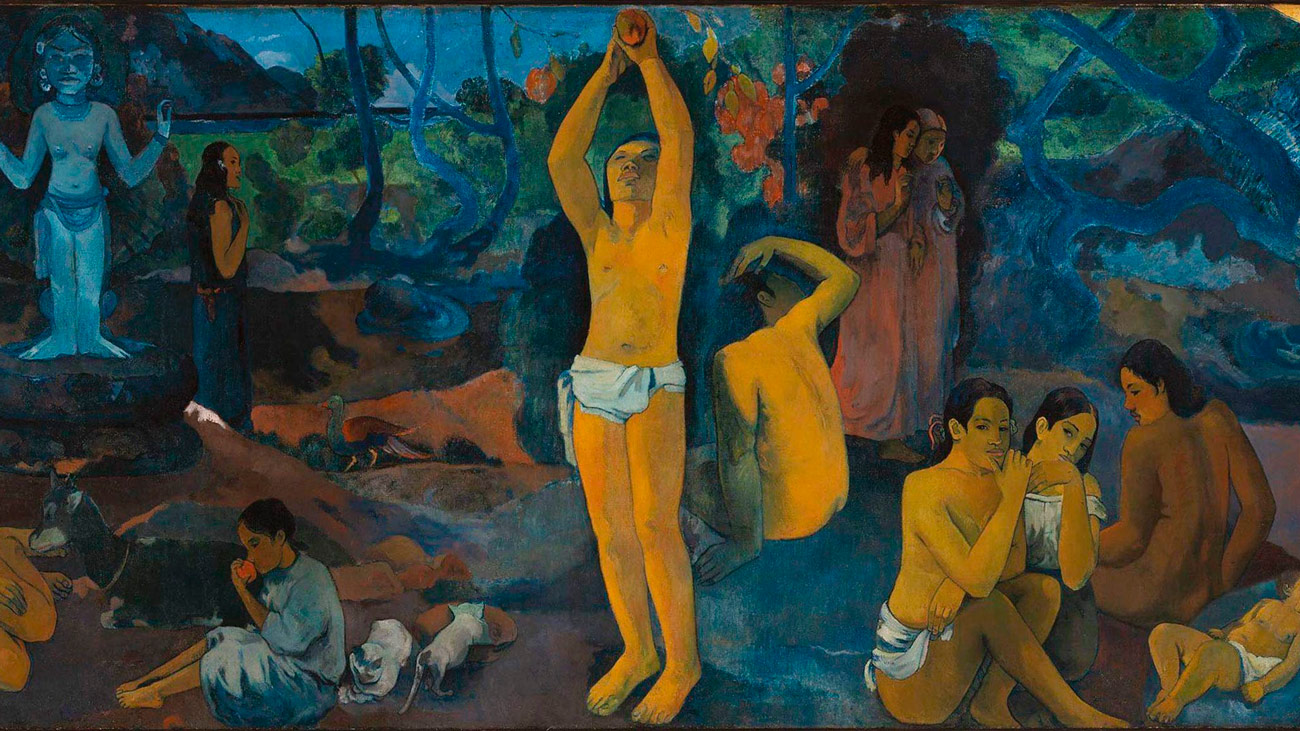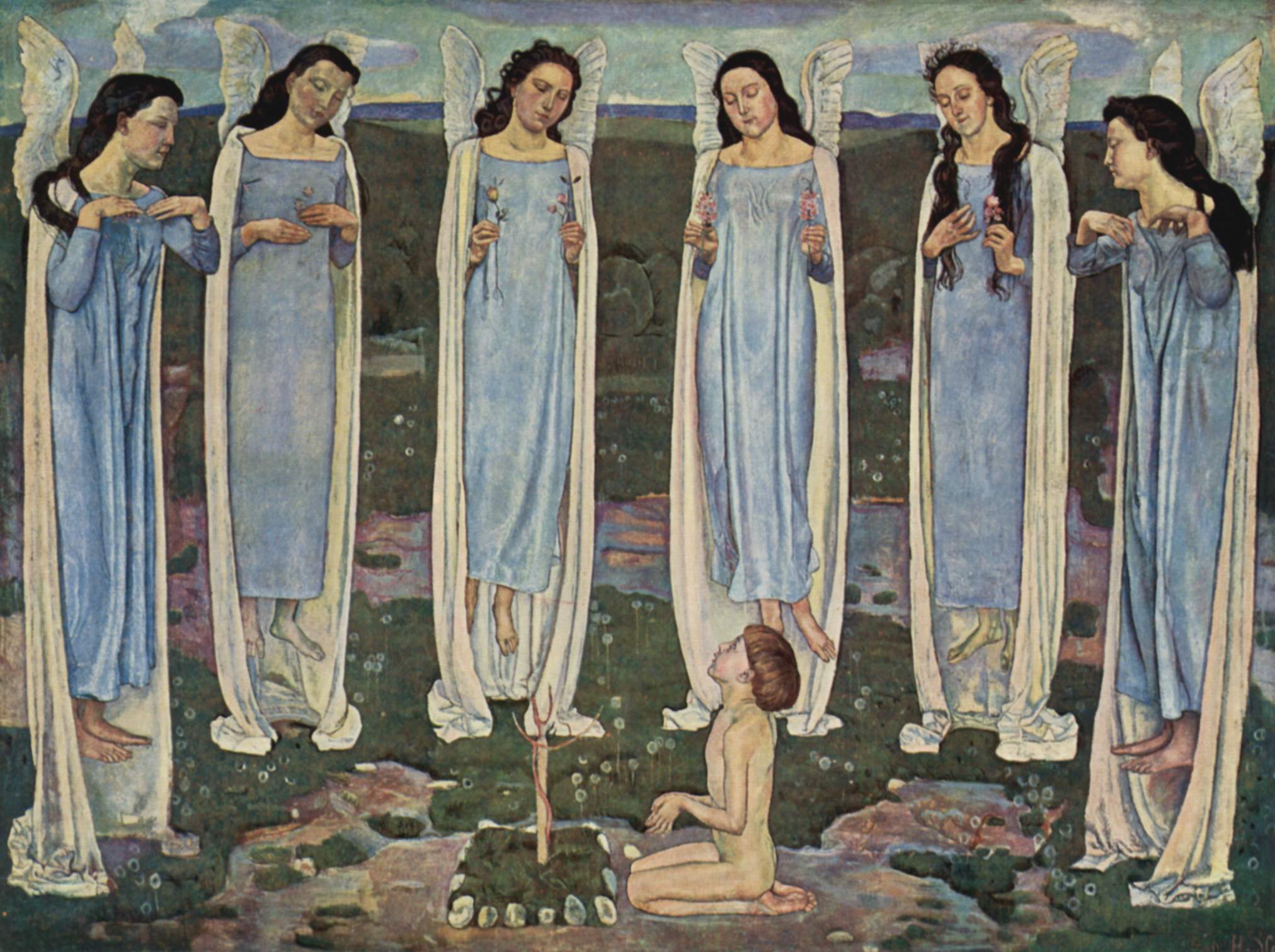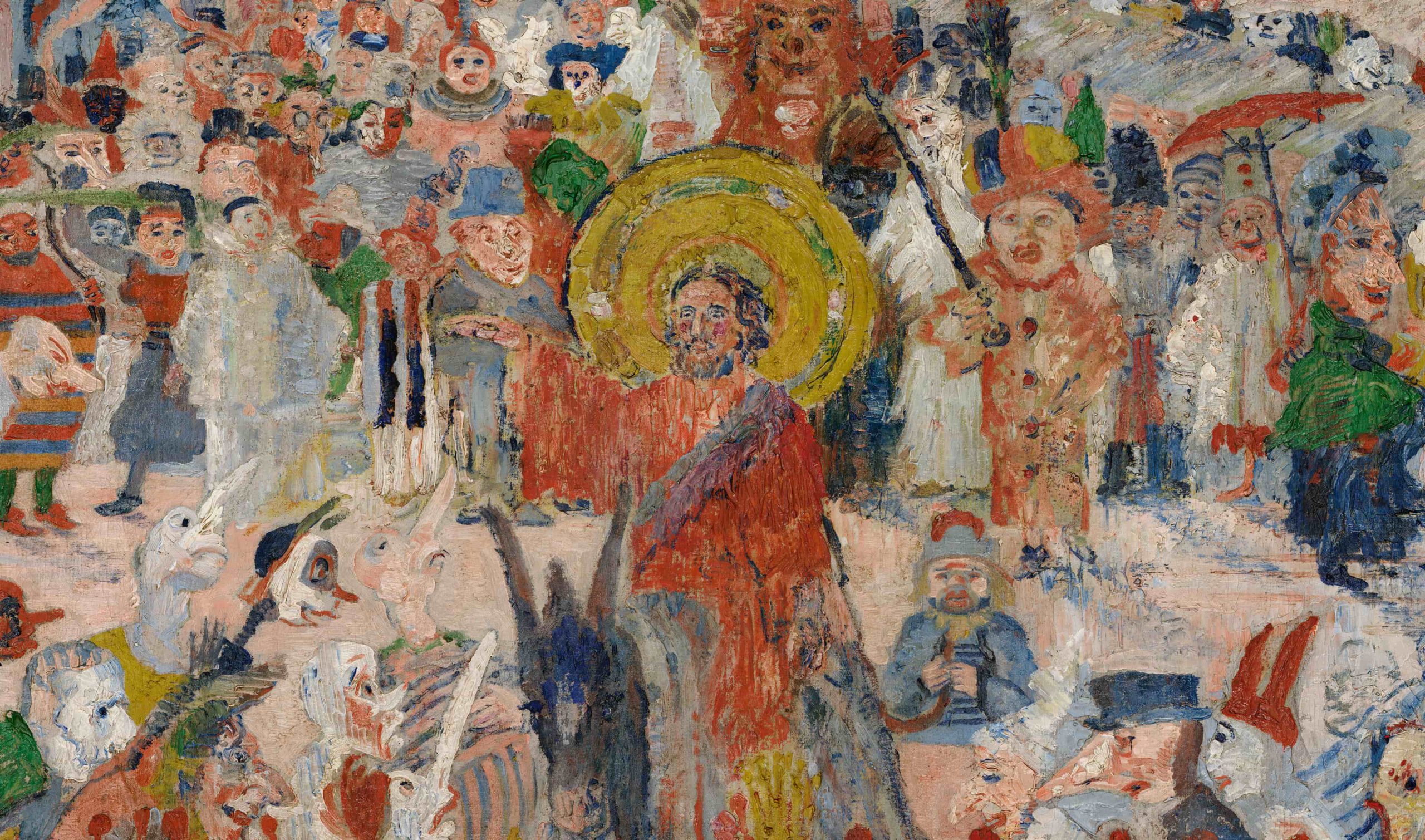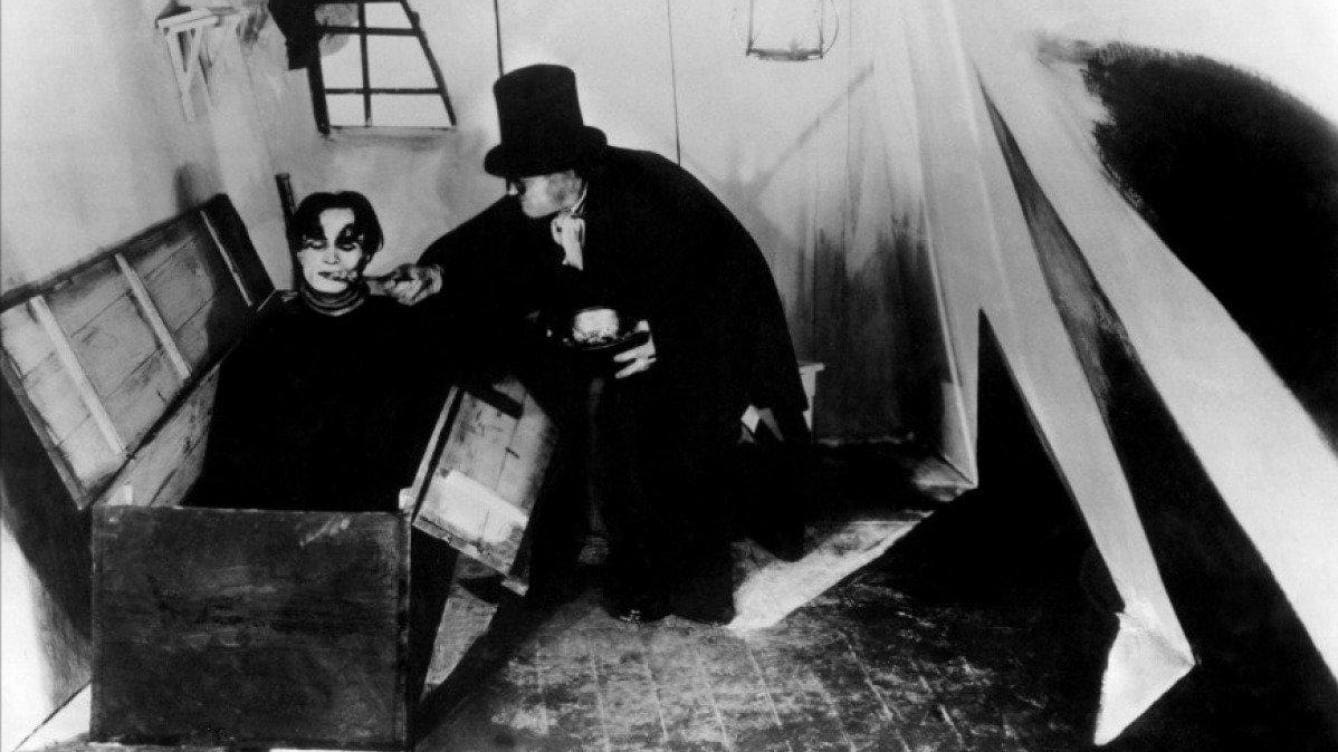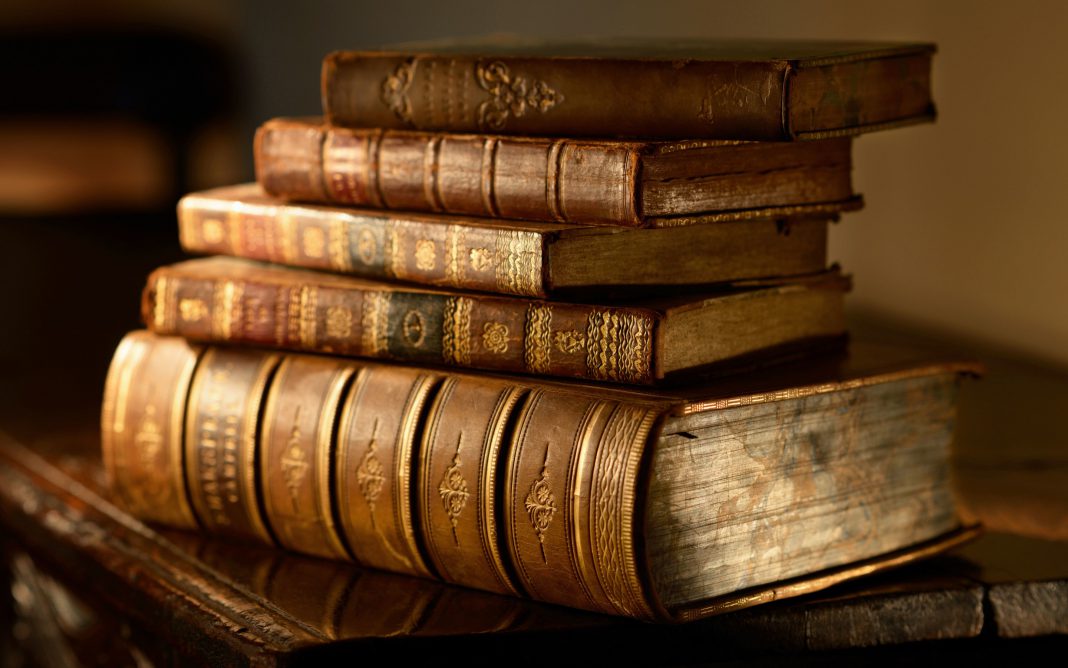The artist's mind is capable of creating unimaginable things, many trends and styles in the world prove it, but for many, perhaps none as well as the Expressionism. Delve into this fascinating art style born in the late nineteenth century.
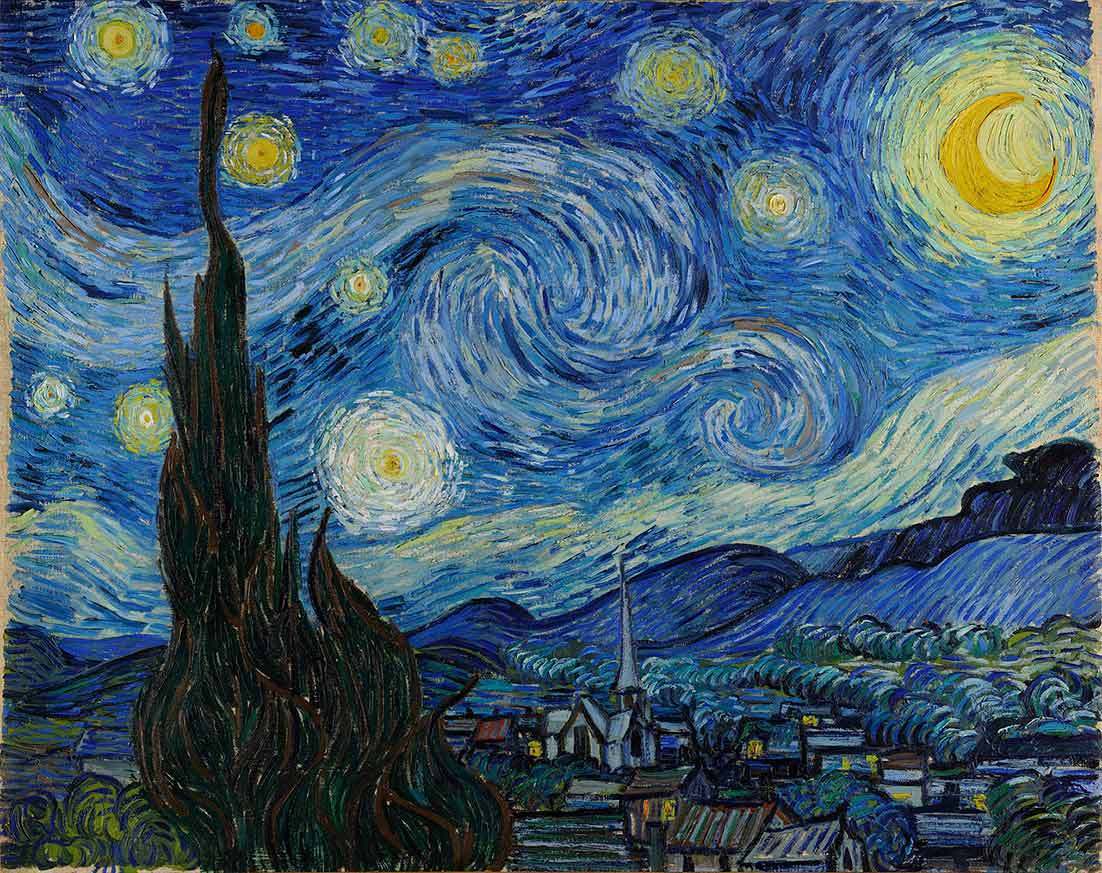
What is expressionism?
Expressionism is an artistic style that seeks to represent not objective but subjective reality. The intention is to reflect the emotions and responses that objects and events arouse within a person. The artist manages to capture this subjective reality through distortion, exaggeration, primitivism, fantasy and also through the vivid, jarring, violent or dynamic application of formal elements.
Expressionism is a very personal and intense art form, where the creator tries to communicate his feelings and intimate thoughts in his productions, moving away from the traditional representation of reality. Characteristic of this current is its decisive influence on painting, in which attempts to achieve maximum impact on the viewer sacrifice or distort the accuracy of the representation, generally in favor of strong contours and striking colors, although this is not the rule in all cases.
The compositions are usually simple and direct, where the use of a thick pasty paint is frequent, using loose brushstrokes that are applied in a very free way and an occasional symbolism, the message being of the utmost importance.
Expressionism is one of the main artistic currents that developed between the end of the XNUMXth century and the beginning of the XNUMXth, with qualities of highly subjective, personal and spontaneous self-expression, typical of a wide range of modern artists and art movements.
This can be seen as a permanent trend in Germanic and Nordic art since at least the European Middle Ages, particularly in times of social change or spiritual crisis, being in this sense contrary trends the rationalist and classicist, which was appreciated in Italy and more. evening from France
In the early XNUMXth century, this artistic trend swept Europe, fueled by resistance to bourgeois culture and a fervent search for fresh, young creativity. Expressionist artists and expressionist art emphasize the self, the psyche, the body, sexuality, nature, and the spirit.
Expressionism as a style or movement different from the trend of the time focuses on a series of German, Austrian, French and Russian artists, who became popular in the years before the First World War and remained so for much of the period between. the wars.
In France, the Dutchman Van Gogh delved into and revealed his unusual, troubled and colorful psyche, on the other hand, in Germany, the Russian Wassily Kandinsky explored spirituality in art as an antidote to alienation in the modern world, and in Austria, Egon Schiele and Oskar Kokoschka fought against the moral hypocrisy of society by addressing issues such as sexuality, death and violence.
Edvard Munch was finally making an impact in Norway and throughout Europe with his wild and intense expressions of the environment, of his self and his psyche. Together, these artists tackled very raw, true and timeless questions, themes and struggles that had been churning under the surface and are still familiar to us even today.
That was perhaps the reason why expressionism in art continued in many different guises even after these artists and this specific period in time, allowing us to say that expressionism is still alive today.
Origins
At the beginning of the XNUMXth century in Western Europe, society was evolving at a rapid pace, intense industrialization had taken the continent almost by storm, with innovations in the worlds of manufacturing and communications, often creating a sense of malaise in the world. general public.
The dizzying growth of technology and the urbanization of large cities brought with them feelings of isolation and disconnection from the natural world. It is understandable that these emotions and anxieties began to surface or rather bleed through the art of the time. The two groups of artists who created expressionism as we know it today: Die Brucke y Der blaue reiter, both formed in Germany at the beginning of the XNUMXth century.
Four architecture students in Dresden created a communal art group called die brucke (the bridge). Fritz Bleyl, Erich Heckel, Karl Schmidt-Rottluff, and Ernst Ludwig Kirchner they tried to be the bridge into the future of art, evoking intense emotional responses using unnatural shapes, colors and compositions, all inspired by the modern world.
His works bore a strong resemblance to the Fauvism movement in France, led by Henri Matisse, especially in the use of bright colors and atypical shapes, with the intention of conveying multiple emotions. die brucke it was intended to be a youthful and innovative opposition and response to centuries of realism in art. In 1906, they made their manifesto in a woodcut, which expressed the following:
“With the faith in continuous evolution, in a new generation of creators and appreciators, we bring together all young people. And as young people who carry the future, we intend to gain freedom of movement and life for ourselves in opposition to the old and well-established powers. Whoever directly and authentically expresses what drives him to create is one of us” Kirchner (1906)
Through this call to action, young Western European artists were given the challenging task of building a new art movement: Expressionism.
The artists of the movement die brucke they concentrated primarily on depicting the massive chaos of the new modernity, industrialization, and urbanism that surrounded them. They painted urban landscapes with exaggerated, jagged peaks and vibrant colors.
After overcoming the limits, much more than the Fauves, die brucke he incorporated underground German nightclub culture, lower-class decadence, and all the emotion and discomfort into his performances, without neglecting his own personal vision and meaning.
This informal association rebelled against what they saw as the superficial naturalism of academic impressionism. They wanted to re-infuse German art with a spiritual vigor that they felt was lacking and sought to do so through elemental, highly personal and spontaneous expression. The original members of Die Brücke were soon joined by the Germans Emil Nolde, Max Pechstein and Otto Müller. The Expressionists were influenced by their predecessors from the 1890s.
They were also interested in African woodcarvings and the works of Northern European Medieval and Renaissance artists such as Albrecht Dürer, Matthias Grünewald, and Albrecht Altdorfer. Woodcuts, with their thick jagged lines and harsh tonal contrasts, were a favorite medium of the German Expressionists.
The works of the Die Brücke artists stimulated expressionism in other parts of Europe. Oskar Kokoschka and Egon Schiele of Austria adopted his tortured brushstrokes and angular lines, and Georges Rouault and Chaim Soutine in France developed painting styles marked by intense emotional expression and the violent distortion of figurative subject matter.
The painter Max Beckmann, the graphic artist Käthe Kollwitz, and the sculptors Ernst Barlach and Wilhelm Lehmbruck, also worked with strong expressionist influences. Many of their works express frustration, anxiety, disgust, discontent, violence, and in general a kind of frenzied intensity of feeling in response to the ugliness, stark banality, and glimpsed possibilities and contradictions in modern life.
A second group, known as Der blaue reiter (The Blue Rider), formed in Munich in 1911. Named after the painting by Wassily Kandinsky, this collective was made up of Russian émigrés Kandinsky, Alexej von Jawlensky and Marianne von Werefkin and German artists Franz Marc, August Macke and Gabriele Munter.
Kandinsky's painting was chosen as the group's namesake because of its depiction of a figure on horseback from reality into a spiritual and emotional realm, and it is that the artists of Der blaue reiter they were fascinated with depicting the spiritual side rather than the physical.
Although his styles varied, as his productions show, interests in primitivism and the emotional landscape dominated his works. Very different of Die Brucke, The Blue Rider he was a great force in the development of abstract expressionism.
Expressionism and abstract art reject realism, trying at all times to convey emotions, however, expressionism retains a sense of form and symbolism while abstract art abandons recognizable images.
Der blaue reiter he brought these ideas together, creating an entirely new branch of expressionism that is still highly influential on modern art. When the First World War started, die brucke y Der blaue reiter they disbanded, but their legacy lives on as Expressionism continues to grow in popularity and is still practiced into the XNUMXst century.
The roots of the German Expressionist school can be found in the works of Vincent van Gogh, Edvard Munch and James Ensor, each of whom, in the period between 1885-1900, developed a very personal style of painting.
These artists used the expressive possibilities of color and line, exploring dramatic and emotionally charged themes, with the intention of conveying the qualities of fear, horror and the grotesque, or simply to celebrate nature with mind-boggling intensity. They broke with many schemes, they did not literally represent nature, to express more subjective perspectives or mental states.
The German Expressionists soon developed a style notable for its harshness, boldness, and visual intensity. They used jagged and distorted lines, rapid and harsh brushwork, not to mention jarring colors that helped them depict urban street scenes and other contemporary themes in hectic, crowded compositions noted for their instability and emotionally charged atmosphere.
The artists belonging to the group known as Der Blaue Reiter are sometimes considered expressionist, although their art is generally lyrical and abstract, less overtly emotional, more harmonious, and more concerned with formal and pictorial problems than that of the Die Brücke artists.
Expressionism was also a dominant style in Germany in the years immediately following World War I, where it suited the postwar atmosphere of cynicism, alienation, and disillusionment. Some of the movement's later practitioners, such as George Grosz and Otto Dix, developed a sharper, more socially critical mix of expressionism and realism known as the Neue Sachlichkeit (New Objectivity).
In the XNUMXth century
As can be seen from labels such as Abstract Expressionism and Neo-Expressionism, the spontaneous, instinctive, and highly emotional qualities of Expressionism have been shared by various subsequent art movements of the XNUMXth century.
Expressionism is considered more of an international trend than a coherent art movement, which was particularly influential in the early XNUMXth century. It covers several fields: art, literature, music, theater and architecture.
Expressionist artists sought to express emotional experience, rather than physical reality. Famous expressionist paintings are The Scream by Edvard Munch, The Blue Rider Wassily Kandinsky and Woman sitting with left leg raised by Egon Schiele.
decline of movement
Expressionism's decline was accelerated by the vagueness of its longing for a better world, by its use of highly poetic language, and in general by the intensely personal and inaccessible nature of its presentation. Several Expressionist artists lost their lives during or as a result of World War I due to trauma and disease. Such was the case with Franz Marc who passed away in 1916 and Egon Schiele who died during the influenza epidemic of 1918, many others took their lives after collapsing under the traumas of war.
The partial restoration of stability in Germany after 1924 and the growth of overtly political styles strongly influenced by social realism accelerated the decline of the movement in the late 1920s.
Expressionism died definitively with the rise of the Nazis, who came to power in 1933 and described the work of almost all expressionists as degenerate and vulgar. Their persecution and harassment was intense and excessive, prohibiting these exponents from exhibiting, publishing and even working, most of whom went into exile in the United States and other countries as a more drastic measure.
That was the end of the era of German expressionism, which came to an end with the Nazi dictatorship and which was responsible for labeling countless artists of the time, including Pablo Picasso, Paul Klee, Franz Marc, Ernst Ludwig Kirchner, Edvard Munch, Henri Matisse, Vincent van Gogh and Paul Gauguin, as degenerate artists, removing their expressionist works of art from museums and abusively confiscating them.
However, expressionism continued to inspire and live on in later artists and art movements. For example, Abstract Expressionism developed as a major avant-garde movement in postwar America in the 1940s and 1950s. These artists eschewed figuration and instead explored color, gestural brushwork, and spontaneity in his art.
Later, towards the end of the XNUMXs and the beginning of the XNUMXs, neo-expressionism began to develop as a reaction against the conceptual and minimalist art of the time.
The Neo-Expressionists drew heavily on the exponents of German Expressionism who preceded them and often rendered subjects crudely with expressive brushwork and intense color. The most iconic artists of this movement include Jean-Michel Basquiat, Anselm Kiefer, Julian Schnabel, Eric Fischl, and David Salle.
Worldwide presence
Expressionism is a complex and vast term that has meant different things at different times. However, when we talk about expressionist art, many direct their gaze to the artistic trend that arose as a response to impressionism in France or to the movement that saw the light of day in Germany and Austria at the beginning of the twentieth century. The term is so elastic that it can accommodate artists ranging from Vincent van Gogh to Egon Schiele and Wassily Kandinsky, exhibiting in a very particular way in each country.
French expressionism
In France, the major artists often associated with Expressionism were Vincent van Gogh, Paul Gauguin, and Henri Matisse. Although Van Gogh and Gauguin were active in the years before what is considered the main period of Expressionism (1905-1920), they can certainly be considered Expressionist artists, who were painting the world around them not simply as it seemed, but from a deeply subjective human experience.
Matisse, Van Gogh, and Gauguin used expressive colors and brushwork styles to depict emotions and experiences, moving away from realistic depictions of their subjects and focusing on how they felt and perceived.
german expressionism
In Germany, expressionism is particularly associated with the Brücke and Der Blaue Reiter groups as mentioned above. The German Expressionist movement was inspired by mysticism, the Middle Ages, the primitive age, and the philosophy of Friedrich Nietzsche, whose ideas were immensely popular and influential at the time.
Der Brücke was formed in Dresden in 1905 as a bohemian collective of expressionist artists who opposed the bourgeois social order in Germany. The four founding members were Ernst Ludwig Kirchner, Fritz Bleyl, Erich Heckel, and Karl Schmidt-Rottluff, none of whom had received a formal art education.
They chose its name, Der Brücke, to describe their desire to build a bridge between past and present. The name was inspired by a passage from Thus Spoke Zarathustra by Friedrich Nietzsche. The artists attempted to escape the suffocating modern middle-class life by exploring an intensified use of color, a direct and simplified approach to form, and free sexuality in their work.
Der Blaue Reiter was founded in 1911 by Wassily Kandinsky and Franz Marc and faced with the growing alienation they experienced due to the modernization of the world, they sought to transcend the mundane by pursuing the spiritual value of art.
In addition, his objective was to break the borders and mix children's art, popular art and ethnography. The name Der Blaue Reiter is related to the recurring Horse Rider theme of Kandinsky's period in Munich, as well as Kandinsky's and Marc's love of the color blue, which for them had spiritual qualities. The main artists associated with Der Blaue Reiter are Kandinsky, Marc, Klee, Münter, Jawlensky, Werefkin, and Macke.
Austrian expressionism
Egon Schiele and Oskar Kokoschka are the two leading figures in Austrian Expressionism and were especially influenced by their predecessor Gustav Klimt, who was also involved in launching their careers, with exhibitions he created showcasing the best in contemporary Austrian art.
Both expressionist artists lived in the contradictory city of Vienna in the late nineteenth and early twentieth centuries, where moral repression and sexual hypocrisy played an important role in the development of expressionism.
Schiele and Kokoschka avoided what they saw as falsehood and moral hypocrisy and portrayed themes such as death, violence, longing, and sex. Kokoschka became known for his portraits and his ability to reveal the inner nature of his subjects, and Schiele for his stark, almost brutally honest depictions of sexuality, which were considered aloof and desperate.
norwegian expressionism
Another important artist of the time who had a great impact on the German and Austrian expressionist scene was the Norwegian Edvard Munch, well known in Vienna for the Secession and Kunstschau exhibitions in 1909.
He was considered the highest representative of his country in this movement and a key precursor to it. Closely associated with symbolism, Munch is most famous for The Scream, this painting of a figure on a bridge, the sun setting behind him and appearing to let out a blood-curdling, desperate scream, demonstrating the artist's restless spirit.
Iconic Expressionist Artworks
As in other artistic movements, expressionism has its important figures that marked a before and after in their time, creating unique and immortal artistic samples, such as those presented below:
The Scream by Edvard Munch (1893)
This series of paintings known as The Scream (Skrik) was inspired by a momentary experience that its creator E. Munch had while he was in France, the most famous of which is currently located in the National Gallery of Norway and was completed in 1893. In his own words:
I was walking down the road with two friends. The sun began to set. I felt a hint of melancholy. Suddenly, the sky turned blood red. I stopped, leaned on the railing, dead tired, and looked at the flaming clouds that hung like blood and a sword over the blue-black fjord and the city.
My friends kept walking. I stood there, trembling with fear. And I felt a strong and endless scream penetrating nature. Expressionism, Ashley Bassie, p.69
The figure transmits fear, despair, its scream completely surrounds it and goes through both the environment and the minds of those who observe it. In an expressionist style, the painting is made in oil, tempera and pastel on cardboard, with a size of 91 x 74 centimeters.
Der Blaue Reiter by Wassily Kandinsky (1903)
Der Blaue Reiter or the Blue Rider is one of Kandinsky's first expressionist works, admired for his incredible use of color and light, it is considered a bridge between post-impressionism and expressionism. It shows a rider on a horse dressed in blue galloping through the fields. The name of this work was also used as the name of the group of expressionist artists, founded in 1911 by its author and Franz Marc.
The Blue Rider is perhaps Kandinsky's most important artistic display of the early XNUMXth century, before he had fully developed his abstract style. The painting illustrates a rider dressed in blue, riding through a greenish brown.
The abstraction of the painting is intentional and leads many art theorists to recreate their personal representations on the painting, where some even saw a child in the arms of the blue rider. Allowing viewers to include themselves in art pieces was a technique the painter used frequently and successfully in his later works, which became more abstract as his career progressed.
The Blue Horses by Franz Marc (1911)
Franz Marc was one of the founding members of Der Blaue Reiter, an artist who for many gave emotional and psychological meaning to the colors he used in his work, producing works of great color and richness.
Blue was used by him very often, especially to represent masculinity and spirituality, he was also fascinated by animals and their inner world, treating each other in a deeply emotional way.
Seated Woman with Legs Raised (1917) by Egon Schiele
Egon Schiele painted his wife Edith Harms in 1917, depicting her seated on the floor, resting her cheek on her left knee. Her fiery red hair contrasts remarkably with the green color of her shirt, being considered a daring and suggestive portrait, with very well-defined and daring erotic nuances for the time. The author of this watercolor was characterized by having eroticism as one of the main themes in his work.
pioneers of expressionism
Although many connoisseurs of the field claim that nowhere was Expressionism better executed than in Germany, during the decade leading up to World War I many artists created a host of unforgettable images and pioneered Expressionism, being remembered as such until our days:
Van Gogh (1853-90)
This prominent painter embodies expressionism, with a wide variety of autobiographical works, which tell the viewer his ideas, feelings and above all his mental balance, through composition, colors and each brushstroke. His paintings were a reflection of his feelings while he was making them and since then, few artists have equaled or come close to his intensity and originality, in regards to self-expression.
Born into a very religious family, his father was a Protestant minister, from a young age he showed a keen talent for drawing, but it was not until much later, at about 27 years of age, that he finally pursued his true calling as an artist.
In 1878, he manifested his vocation as a priest, began to study theology, but did not graduate due to his excessively mystical determination to follow in the footsteps of Christ. His eagerness to save souls and help the poor led him to work as an evangelist in one of the poorest mining areas of Belgium, from which he was expelled in 1880.
At that same time he decided to become a painter, a career that he began with the moral and financial support of his brother Theo, with whom he maintained a continuous correspondence throughout his life. His main sources of inspiration were passages from the Bible and the works of Émile Zola, Victor Hugo and Charles Dickens, as well as the paintings of Honoré Daumier and, above all, the realism of Jean-Francois Mijo. He began his working life as an employee of the Goupil Art Gallery.
Van Gogh experienced pain and sadness, caused by the world that he loved intensely, but from which he never thought he received the same. As a reaction to this constant feeling, he used art to create his own world, one where there will be no lack of color and movement, where he exposed all his emotions, becoming one of the great expressionist painters of the XNUMXth century. His unique style of expressionist painting can be seen in the Van Gogh Museum in Amsterdam and the Kroller-Muller Museum in Otterlo.
Paul Gauguin (1848-1903)
If Van Gogh distorted form and color to convey his inner feelings, this French artist relied on color primarily to express his emotions. He also employed symbolism, but it was his color in the painting that really set him apart. Born in Paris during the 1848 revolution, he was the son of a liberal journalist, who fled into exile after the 1851 coup, taking his family with him.
However, he died en route, in Panama, as the family headed for Lima, Peru, where they fend for themselves for four years. Gauguin's mother was the daughter of the French socialist writer and activist Flora Tristán, although her ancestors were Peruvian nobles.
It is important to note that young Gauguin was marked from childhood by the imaginative and messianic atmosphere of his family circle, proving throughout his career that the colors and images of Peru would be a strong influence. At the age of 7 the family returned to France and moved to Orleans to live with his grandfather. In his youth he worked as a pilot's apprentice in the merchant navy, sailing between South America and Scandinavia, in Paris and encouraged by his godfather, he began a very successful career with the stockbroker Bertin.
But Gauguin had been interested in art since he was a child and in his spare time he began to paint. His godfather, Arosa, was something of an art collector and her example and the friendship that Gauguin established with the Impressionist Camille Pissarro encouraged this aficionado to visit art galleries and buy works by emerging artists, including numerous Impressionist paintings.
He visited the now famous Impressionist exhibition of 1874 in Paris and was so inspired that he decided to become a full-time artist, so he began painting and sculpting as an amateur. He worked with Bouillot and painted in the style of Bonvin and Lepine. In 1876 he exhibits a painting at the Salon.
He was particularly influenced by Pissarro, who helped him in his beginnings as a painter and encouraged him to search for the style that suited his temperament. Pissarro introduced him to Cézanne and his style so captivated him that Cézanne began to fear that he would steal his ideas.
The three men worked together for some time in Pontoise, but as his art progressed, Gauguin decided to move into his own studio and took part in the Impressionist exhibitions of 1881 and 1882. Their successes and a financial crisis led him to abandon his career. business in 1883 to concentrate entirely on painting.
He went to live in Pont-Aven in Brittany in 1885 where he forged a new style, as he was dissatisfied with the limits of Impressionism and sought to express an inner state rather than a superficial appearance.
This new style required working more from memory and internal images, instead of nature, breaking with impressionist theory. This became Gauguin's greatest innovation and contribution to fine art painting, using a vivid color palette to express emotion rather than reflect a natural tone. In addition to expressionism, he also influenced the development of synthetism and cloisonnism during his stay at Pont-Aven.
Edward Munch (1863-1944)
Another great pioneer of expressionism was the temperamental and neurotic Norwegian painter and printmaker who, despite having great emotional scars in his early life, managed to live well into his 80s. Almost all of his best pictures were painted before his breakdown in 1908.
Born in Loten, Norway, the son of a doctor, he had a life full of difficult moments. When the artist was five years old, his mother died of tuberculosis, a disease to which his older sister also succumbed a few years later.
These early tragic events made death an integral part of his art later on. The memory of the dying body against a pillow, next to the bed a dim light and the lifeless glass of water and an authoritarian father who endlessly repeated to his children that if they sinned, they would be condemned to hell without mercy, accompanied him for many years. .
With this scenario and as expected, the family suffered a lot. One of the younger sisters was diagnosed with mental illness at a young age and Munch himself often felt ill. Of his five brothers, only one married, but he died a few months after the wedding.
In 1881 Munch joined the Royal School of Art and Design in Kristianind and took modeling and drawing lessons. His teachers and early influence were the Norwegian sculptor Julius Middelthun and the naturalist painter, author and journalist Christian Krohg.
Although Munch painted traditional subjects in his student life, he quickly discovered his own unique style. In 1882 he rented his own studio with a couple of other artists and although there are not many of his works left from this time, the well-known ones are highly valued, for example, the one titled Morning (1884).
This artist bequeathed all his work to the city of Oslo, a collection made up of more than a thousand paintings, fifteen thousand engravings and four thousand drawings and watercolours. In 1963, the Munch-Museet, a museum that houses all of his work, was opened in Oslo and also became the first Western artist to exhibit his paintings at the National Gallery in Beijing.
In 2004, some of Munch's most famous paintings, The Scream and The Virgin, were stolen from the Museum by armed robbers, but were found by police a couple of years later. In addition to the Munch-Museum and the National Gallery of Art in Oslo, many of his paintings and prints are on display in the best art museums in Europe.
Ferdinand Hodler (1853-1918)
A great exponent of expressionist art, the Swiss symbolist painter Ferdinand Hodler was born in Bern in 1853, into a family greatly affected by poverty. His father was a cabinetmaker and when his mother passed away she remarried a painter and decorator, who made him his apprentice, then he was sent to Thun to work with a local artist. His first specialty was conventional landscape painting, beautiful alpine views, which he sold to tourists.
At 18, he decided to change his residence and walked to Geneva, the city where he would spend most of his adult life and where he began to forge what would be a slow career as a professional artist. Eventually, Ferdinand Hodler's parents and siblings die due to illnesses, situations that significantly influence the life and career of the artist, reflecting his close relationship with death in his works.
James Ensor (1860-1949)
Painter born in Ostend, Belgium, the son of small merchants who felt an inclination for the arts from an early age. His parents owned a shop in the market where souvenirs were offered to tourists, such as carnival masks and masks, fans, ceramics, toys and curios. The extravagant carnival masks and blindfolds later employed by Ensor in performances of him, were common features of the town's troupes and parades on Shrove Tuesday.
When he was only fifteen years old, he began his education in the arts with some local exponents, he also studied at the Royal Academy of Fine Arts in Brussels, where he met Fernand Khnopff around 1877. He exhibited his work for the first time in 1881, later returned to his home where he lived until 1917, in his father's house. His early works show a rather classical and somewhat dark style, as can be seen in Russian Music, The Rower and The Drunkards.
In 1887 his palette lightened noticeably, a change that coincided with the death of his alcoholic father, his subjects became a bit surreal, choosing to paint carnivals, masks, skeletons and puppets, usually dressed in costumes in bright and expressive colors.
The works of James Ensor influenced the Dadaist movement and Surrealism, in particular the work of Jean Dubuffet. In 2009, the Museum of Modern Art in New York known as MoMA organized a major retrospective of his work. Today his paintings can be seen in some of the best art museums in the world, especially in the Museum of Fine Arts in Antwerp.
Expressionism in other arts
Expressionism was a cultural movement that originated in Germany at the end of the XNUMXth century and reached its peak in the XNUMXth century. Although expressionism was appreciated much more in painting, it was also manifested in other disciplines such as literature, cinema, music, sculpture, photography, architecture, among others.
expressionism in music
While some classify the composer Arnold Schoenberg as an expressionist due to his contribution to the almanac der Blaue Reiter, musical expressionism seems to have found its most natural outlet in opera. Among the earliest examples of such expressionist works are Paul Hindemith's great operatic presentations of Kokoschka's drama Mörder, Hoffnung der Frauen (Murderer, Women's Hope) (1919) and August Stramm's Sancta Susanna (1922), which addressed the topic of sexuality.
However, the most notable expressionist operas are two by Alban Berg: Wozzeck, performed in 1925 and Lulu, not performed in its entirety until 1979, both with a deep and characteristic penchant for drama.
expressionism in film
Strongly influenced by expressionist stage art, many artists aim to convey in film, through decoration, the subjective state of mind of the protagonist. The most famous of these films is that of Robert Wiene, The cabinet of Dr. Caligari (1920), in which a madman recounts his idea and point of view of how he got to the asylum. The misshapen streets and buildings on the set are projections of their own universe and the other characters have been abstracted through makeup and clothing into visual symbols.
It is a film where horror, menace, anxiety and drama are evoked, the lighting of shadows and strange sets became a stylistic model for expressionist films for several major German directors.
Paul Wegener's version of the G (1920), by F. W. Murnau with Nosferatu: A Symphony of Horror (1922) and Fritz Lang with the silent production Metropolis (1927), among other films, present pessimistic visions of social collapse or explore the ominous duality of human nature and its capacity for monstrous personal evil.
expressionism in sculpture
In sculpture it consisted mainly of drastic changes in the traditional way of sculpting, rather than a particular, uniform style. Expressionism was also popular in sculpture, notable exponents being the woodcarver Ernst Barlach and Wilhelm Lehmbruck. Towards 1920 this one derived more than anything in the abstractionism, in search of a liberation of the forms that offered plenitude to the artistic expression.
As for sculpture in abstract expressionism, several sculptors were also an integral part of the movement, including David Smith, Dorothy Dehner, Herbert Ferber, Isamu Noguchi, Ibram Lassaw, Theodore Roszak, Philip Pavia, Mary Callery, Richard Stankiewicz, Louise Bourgeois and Louise Nevelson, also considered important members of the movement.
Like abstract expressionist painting, the movement's sculptural work was heavily influenced by surrealism and its emphasis on spontaneous or subconscious creation. Abstract expressionist sculpture was more interested in process than product, which can make it difficult to visually distinguish works on aesthetics alone, so it's important to consider what the artist has to say about their process.
An example is the sculptures of David Smith, who sought to express two-dimensional subjects that until now had not been elaborated in three dimensions. It can be said that his work blurred the boundaries between sculpture and painting, generally making use of beautiful and detailed tracery instead of solid forms, with a two-dimensional appearance that broke with the traditional idea of sculpture in the round.
expressionism in literature
Expressionism in literature arose as an innovative reaction against materialism, complacent bourgeois prosperity, family domination within pre-World War I European society, and rapid mechanization and urbanization.
It was the dominant literary movement in Germany during and immediately after World War I. Expressionist writers tried to convey their ideas and social protest through a new style.
Their concern was with general truths rather than particular situations, they explored in their works the difficulties of representative symbolic types rather than fully developed individualized characters.
The emphasis was not on the outside world, which is merely outlined and hardly defined in place or time, but on the inside, on the state of mind of an individual, that is why, in expressionist drama, the interest is in the evocation of moods.
The main character in an expressionist work often expresses his woes in long monologues delivered in concise, elliptical, concentrated language that explores the spiritual malaise of youth, their revolt against the older generation, and the various political or revolutionary solutions that are present. The main character's inner development is explored through a series of loosely linked frames, during which he rebels against traditional values and seeks a higher spiritual vision of life.
August Strindberg and Frank Wedekind were notable forerunners of expressionist drama, but the first recognized expressionist work was that of Reinhard Johannes Sorge, der Bettler (The Beggar), written in 1912 and first staged in 1917. The other leading playwrights in this movement were Georg Kaiser, Ernst Toller, Paul Kornfeld, Fritz von Unruh, Walter Hasenclever, and Reinhard Goering, all of whom were German.
The expressionist style in poetry emerged side by side with its dramatic counterpart, in the same non-referential style and exploring an exalted and wondrous lyricism, much like a hymn. This simplified poetry, using a large number of nouns, some adjectives and infinitive verbs, changed the narrative and the description trying to get to the essence of the feeling.
Among the most influential expressionist poets are the Germans Georg Heym, Ernst Stadler, August Stramm, Gottfried Benn, Georg Trakl and Else Lasker-Schüler, and the Czech poet Franz Werfel. The theme most addressed in the expressionist verses was the horror of urban life and the apocalyptic visions of the collapse of civilization.
Some poets were highly pessimistic and content to lampoon bourgeois values, while others were more concerned with political and social reform, openly expressing hope for a coming revolution. Outside of Germany, playwrights who used expressionist dramatic techniques included the American authors Eugene O'Neill and Elmer Rice.
expressionism in architecture
Expressionist architecture was conceived and designed to evoke extreme feelings and emotions. Buildings created in this style made a statement at the time and stood out from the surrounding structures.
Architects often used unusual, distorted shapes and incorporated totally original building techniques, employing materials such as brick, steel, and glass. Some achieved great success and stood out in their time, among which we can mention Walter Gropius and Bruno Taut, who designed impressive expressionist buildings.
Unfortunately, many of the structures were never built and exist only on paper. Of those that were able to materialize, some were temporary and others did not survive to the present, however, several striking examples of expressionist architecture can be seen today, especially in Germany.
Expressionism-inspired styles
Expressionism was not exactly a uniform trend or movement, as it grouped together a wide variety of styles and in turn gave rise to or influenced many others, also very important movements in art and culture.
abstract expressionism
As New York replaced Paris as the epicenter of innovation in modern art, the expressionist style was reborn as abstract expressionism in the early XNUMXs.
In the United States, it gained strength with the so-called action painters led by Jackson Pollock and Willem De Kooning and the color field painters such as Mark Rothko, Barnett Newman and Clyfford Still. Much more abstract than expressionist, this new school had little tangible connection to the expressionist style of the early XNUMXth century.
figurative expressionism
Although post-war American and European art was dominated by abstraction, representational expressionism was still popular in Australia in the 1940s and 1950s, as exemplified by the works of artists such as Russell Drysdale and Sidney Nolan. .
It is closely related to the Nordic and Germanic world, with roots in the ancient world of the German nation and the romantic movement of the nineteenth century. Try to represent reality with a different and personal perspective
neoexpressionism
The last revival of the expressionist movement took place in the 1970s in the United States, Great Britain, Germany, Italy and France, under the name of neo-expressionism. Seen primarily as a reaction to the minimalism and conceptual art of the XNUMXs, its main exponents included:
- Philip Guston and Julian Schnabel (USA)
- Paula Rego and Christopher Le Brun (Great Britain)
- The neo-expressionist school known as the Neue Wilden (New Fauves) which included: Georg Baselitz, Gerhard Richter, Jorg Immendorff, Anselm Kiefer, Ralf Winkler and others. (Germany)
- Transavanguardia (Beyond the avant-garde) and featured artists such as Sandro Chia, Francesco Clemente, Enzo Cucchi, Nicolo de Maria and Mimmo Paladino. (Italy)
- Figuration Libre, formed in 1981 by Remi Blanchard, Francois Boisrond, Robert Combas and Herve de Rosa. (France)
If you liked this article, we invite you to consult other very interesting ones on our blog:
